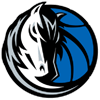The title borrows from an 2005 Toby Keith classic in which the lyrics acknowledge a character who is past his prime, but says he has a little something left in him. Some of you reading this may echo the same thoughts as you consider where you are in your current pursuits. I was recently on the BaseballHQ Radio podcast and mentioned to host Patrick Davitt that one of the common themes of my underperforming teams this season was a smattering of old boring players and that I was going to write about what I was observing. This column installments fulfills that commitment.
We label older players old and boring because they are known quantities. We have already seen the high ceiling, and we hope that have seen their low floor, so survivor bias leads us to established veterans who can gracefully age into retirement and not do what Steve Carlton, Adam Wainwright, and most recently, Charlie Morton appear to be doing. I recognize those are all pitchers, but David Ortiz and Nelson Cruz may have blown the bell curve for the rest of the class, as both defied Father Time to be productive if not excellent hitters as late as age 40. Ortiz went out on top, while Cruz failed to see the same writing on the wall and limped to the age-42 finish line.
My concern is that recently we appear to be heading back to a time where players aged more rapidly. I always look at Dale Murphy
The title borrows from an 2005 Toby Keith classic in which the lyrics acknowledge a character who is past his prime, but says he has a little something left in him. Some of you reading this may echo the same thoughts as you consider where you are in your current pursuits. I was recently on the BaseballHQ Radio podcast and mentioned to host Patrick Davitt that one of the common themes of my underperforming teams this season was a smattering of old boring players and that I was going to write about what I was observing. This column installments fulfills that commitment.
We label older players old and boring because they are known quantities. We have already seen the high ceiling, and we hope that have seen their low floor, so survivor bias leads us to established veterans who can gracefully age into retirement and not do what Steve Carlton, Adam Wainwright, and most recently, Charlie Morton appear to be doing. I recognize those are all pitchers, but David Ortiz and Nelson Cruz may have blown the bell curve for the rest of the class, as both defied Father Time to be productive if not excellent hitters as late as age 40. Ortiz went out on top, while Cruz failed to see the same writing on the wall and limped to the age-42 finish line.
My concern is that recently we appear to be heading back to a time where players aged more rapidly. I always look at Dale Murphy as an example, as he hit 218 homers between ages 26 and 31, including 44 homers in his age-31 season in 1987, when the ball flew around parks as never before across the league. Murphy went on to hit exactly double the homers he had in 1987 over the remaining six years of his career between Atlanta, Philadelphia and Colorado before bowing out at age 37.
In youth baseball, there are four stages for development labeled Activate, Discover, Progress and Develop. If we could then extend those phases to what happens when a player gets drafted, we would see something like:
- Ages 18-24: Show me what you've got
- Ages 25-27: Prime athleticism
- Ages 28-31: Prime power
- Ages 32+: Show us what you have left
Players can accelerate through phases both positively and negatively, as age is truly just a number. Aaron Judge is 32 years old and is clearly not yet ready to move into the last phase of that chart. Marcell Ozuna is having an incredible age-33 season while Jose Altuve and Freddie Freeman continue to excel into their age-34 seasons. Conversely, George Springer, Paul Goldschmidt and Nick Castellanos each have wRC+ scores below league average while Marcus Semien sits right at 100, and those are just players who continue to see the field enough to count as qualified hitters. Lest I remind you about Jose Abreu, Eddie Rosario, Kevin Kiermaier, Yasmani Grandal, DJ LeMahieu, Adam Duvall, Chris Taylor, etc.? It feels like this year has been excessively rough for the elder statesmen as a whole around the league, so I wanted to dig into the numbers to see if it was just a matter of proximity bias (considering a few of those aforementioned names have littered my rosters) or do the numbers back up what I am feeling?
The batted ball data shows that hard contact is not the problem, as the players who make it into their thirties continue to hit the ball hard, both by HardHit% as well as Barrel%, and have even seen an uptick in Barrel% the past two seasons.

It certainly helps when Judge, Ozuna, Giancarlo Stanton and Yandy Diaz are still posting hard hit rates above 50 percent, while those first three names also post barrel rates of at least 18 percent this season. There are 77 players ages 32 or older with at least 100 plate appearances this season; 38 of those players have a hard hit rate of at least the league average (38.3 percent), while another 31 have a barrel rate of at least the league average (7.9 percent). Just under half of the sample is at least league average for hard hit rate, while just over 40 percent is at or above the league average for barrel rate. This goes along with an average exit velocity for the age group which has consistently sat in the 88 mph range for the past six seasons.
By outcomes, 2019 was a fun season offensively regardless of age, but the older players in the league have struggled to repeat that production since:

This season has been a continued gradual decline of outcomes for the group as a whole despite the heroic efforts of Judge, Ozuna, and others to buoy the numbers. Perhaps this is due to the changes on how we have seen the baseball behave for most of this season.
Plate discipline is an area where we would expect veterans to excel because of the experience they bring to the table. The older players are swinging more frequently this season at pitches in the strike zone than they have since 2015 when this data was first tracked, while their tendencies to chase out of the zone and swing overall have held mostly true over the past three seasons:

Finally, the ability to make contact out of the zone (O-Contact%), in the zone (Z-Contact%) and overall has also held up, for the most part. Players are finding it particularly tough to make out of zone contact with the proliferation of splitters this season:

In short, we are seeing older players hit the ball as hard as they have in recent years but getting lesser results despite similar tendencies from recent seasons. The out of zone contact plunge could be related to an age group which has to cheat a little to catch up to ever-improving fastball velocity, leaving them more susceptible to offspeed pitches plunging out of the zone. It would be great if all older players could age like Ortiz or even Andrew McCutchen, who homered twice on Sunday in a loss to the Dodgers. McCutchen has just once had a season below league average for wRC+ and is the only player in the league not on the injured list (Mike Trout) with at least 300 homers and 200 stolen bases in his career.
I do not have any conclusions, but I do believe that the changes in how the baseball has stored before games is a factor and that the new pace of play should not be ignored. In 2022, there were 23.4 seconds between pitches for players age 32 or older; the new rule changes have pushed that down to 18.6 seconds between pitches. Five seconds may not feel like much of a big deal, but that is a 20.5 percent decrease in the time those players have between pitches. Ultimately, I feel it is a confluence of these factors which has adversely affected this age group and we should be careful in future draft planning to resist the urge to fall back on what was once deemed safe when skills are in question because the environmental changes to the game appear to be altering the aging curve, causing it to return to what it was before medicinal impacts took over.
For more on aging curve data, please read this article I found from February 2024 focusing on Jose Altuve which I came across in digging up background for my article.


































